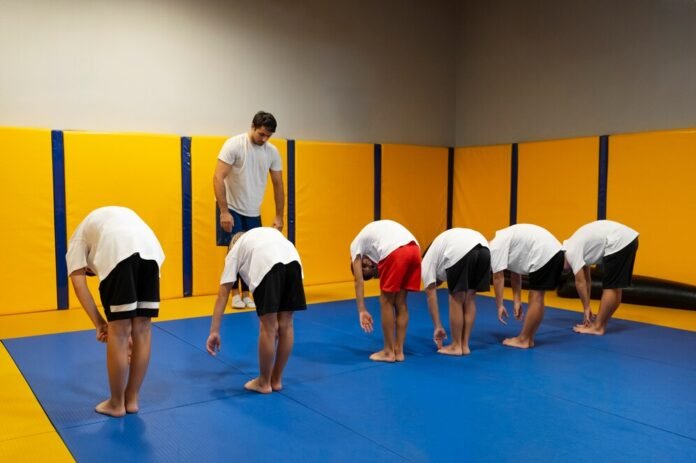Introduction: The Final Strike – Cobra Kai Season 6 Review
After five adrenaline-pumping seasons of rivalries, redemption, and relentless karate showdowns, Cobra Kai returns for its sixth and final season. With decades of legacy from The Karate Kid franchise culminating in this finale, expectations were sky-high—and the creators did not disappoint. cobra kai season 6 review to strike a balance between heartfelt storytelling and hard-hitting action, wrapping up key character arcs while introducing new challenges that test the strength, loyalty, and growth of every dojo member. Whether you’ve been following since Daniel LaRusso and Johnny Lawrence’s first face-off or joined in when Miguel landed his first kick, this season promises closure, chaos, and everything in between.
1. Legacy and Closure: Tying Up Decades of Rivalry
Season 6 stands as a testament to how far the characters have come—not just from Season 1, but from the original Karate Kid films. The writers deliver emotional payoffs that feel earned, not forced, as we witness characters like Johnny, Daniel, and even Kreese face the consequences of their past and present choices. The final episodes dive deep into themes of forgiveness, letting go, and finding peace after a lifetime of battles. For longtime fans, this season feels like a love letter—revisiting pivotal moments and characters in a way that honors the original story while showing how much growth has occurred. There’s a profound sense of legacy throughout, with the younger generation finally stepping out of the shadows of their mentors to forge their own identities.
2. Character Development: A Journey of Redemption and Growth
Cobra Kai has always thrived on complex characters, and Season 6 brings out some of the most compelling growth arcs in the series. Johnny Lawrence, once the show’s underdog anti-hero, evolves into a mature father and mentor, stepping up in both his personal life and dojo. Daniel LaRusso confronts his inner conflict between mercy and aggression, learning to blend Miyagi’s teachings with real-world wisdom. Characters like Miguel, Sam, Hawk, and Tory are no longer just teenagers in rival dojos—they’re young adults grappling with real consequences. Even side characters like Kenny and Anthony get deeper treatment, showing the psychological toll of years of bullying and rivalry. Each storyline converges into a unified theme: becoming the best version of yourself, even if that path is messy and uncertain.
3. Action and Choreography: A Masterclass in Martial Arts Drama
From back-alley brawls to tournament showdowns, Cobra Kai Season 6 delivers some of the most intense and well-choreographed fight scenes in the series to date. The creators have refined the martial arts sequences into a visual symphony—where each punch and kick carries emotional weight. Unlike previous seasons, where fights were sometimes more flash than substance, Season 6 integrates combat deeply into the plot, making every altercation feel meaningful. There’s a noticeable elevation in stunt work, camera angles, and pacing, making battles more visceral and grounded. Whether it’s a high-stakes dojo clash or a surprise ambush, the action never feels gratuitous—it’s an extension of each character’s emotional journey.
4. New Challenges and Villains: Keeping the Stakes High
Season 6 introduces new threats and raises the stakes without falling into repetition. While Terry Silver’s defeat in Season 5 might have signaled an end to Cobra Kai’s reign, new global opportunities like the Sekai Taikai (world tournament) add international pressure. The show smartly avoids recycling the same conflict by showing how power and ambition evolve in different contexts. Kreese’s arc, previously feeling one-note, takes an unpredictable and even philosophical turn, questioning whether villains are born or made. Meanwhile, internal conflicts within both the Miyagi-Do and Eagle Fang camps challenge the unity of the alliances, showing that growth often brings growing pains. These fresh elements add suspense and depth, keeping the final season from feeling like a mere victory lap.
5. Emotional Resonance and Fan Service Done Right
Perhaps the most admirable aspect cobra kai season 6 review is how it balances nostalgia with narrative necessity. Cameos from past Karate Kid characters are sprinkled throughout—not as gimmicks, but as essential parts of the story. There are deeply emotional scenes, including tributes to Mr. Miyagi, reflective conversations between former rivals, and reconciliations that have been brewing for decades. The show doesn’t just rehash old lines or moments; it reinterprets them in new emotional contexts, allowing fans to feel seen and respected. The creators understand the weight this universe holds for its fans, and they wield that power carefully, blending the past with the present in ways that feel organic, not forced.
Conclusion: A Fitting End to a Modern Martial Arts Epic
In a time where many legacy series struggle to stick the landing, Cobra Kai Season 6 delivers a finale that is bold, emotional, and immensely satisfying. It proves that even a story rooted in 1980s nostalgia can grow, evolve, and remain relevant. More than just a martial arts show, Cobra Kai has become a story about healing generational wounds, overcoming personal demons, and building something greater than yourself. While it’s sad to see the series end, it goes out with its head held high, leaving a lasting legacy that will resonate with fans for years to come. Cobra Kai never dies—but this chapter ends exactly when and how it should.


